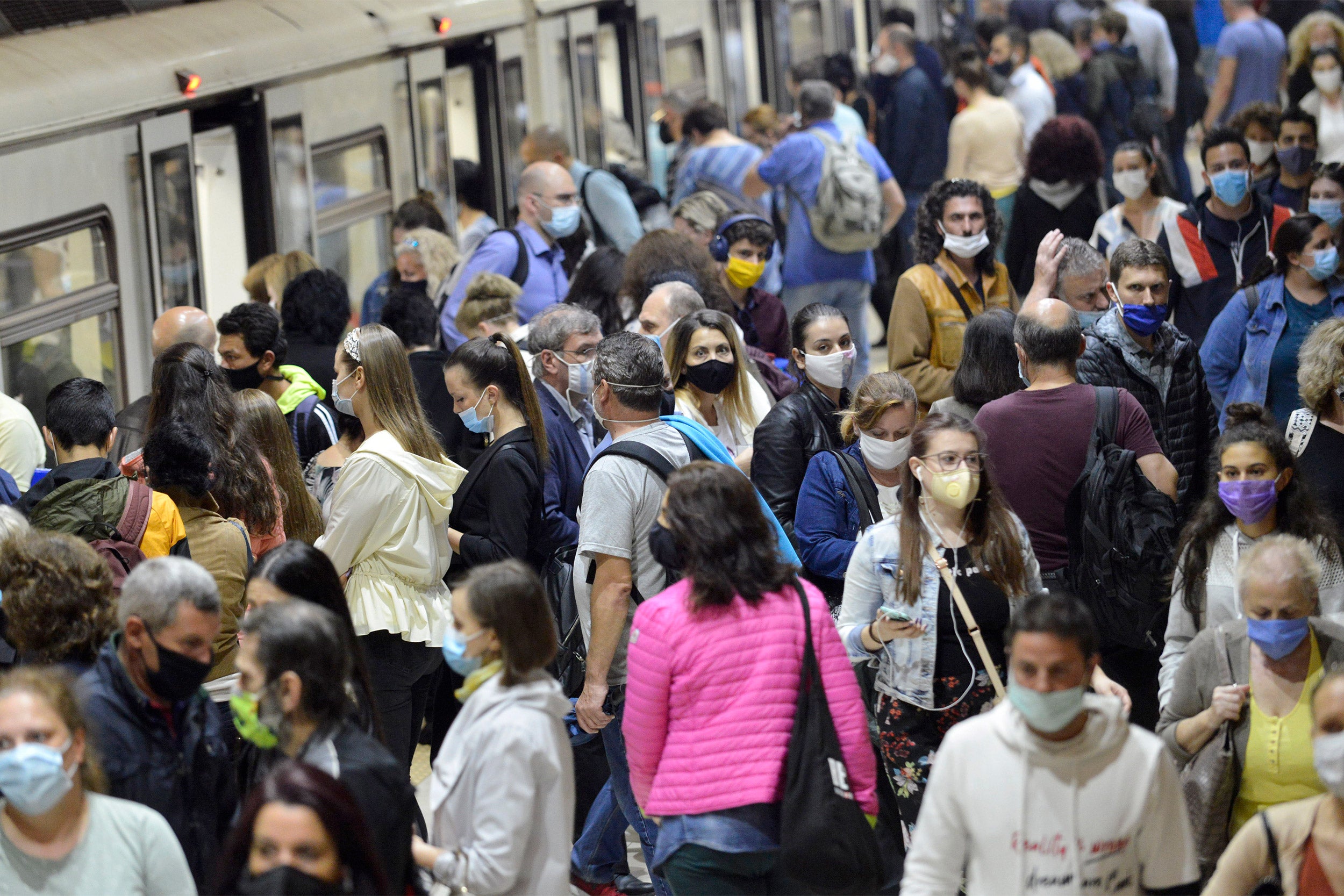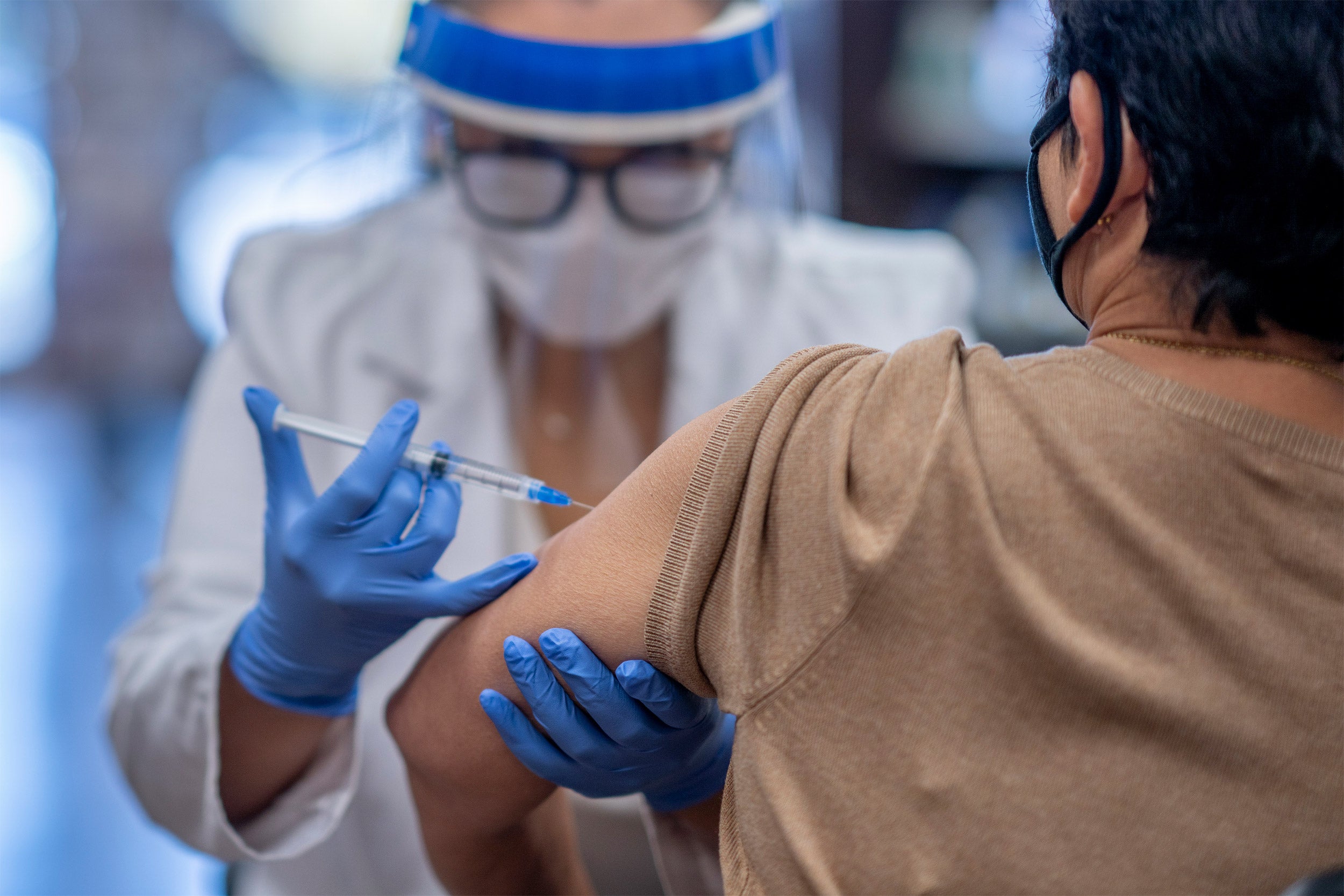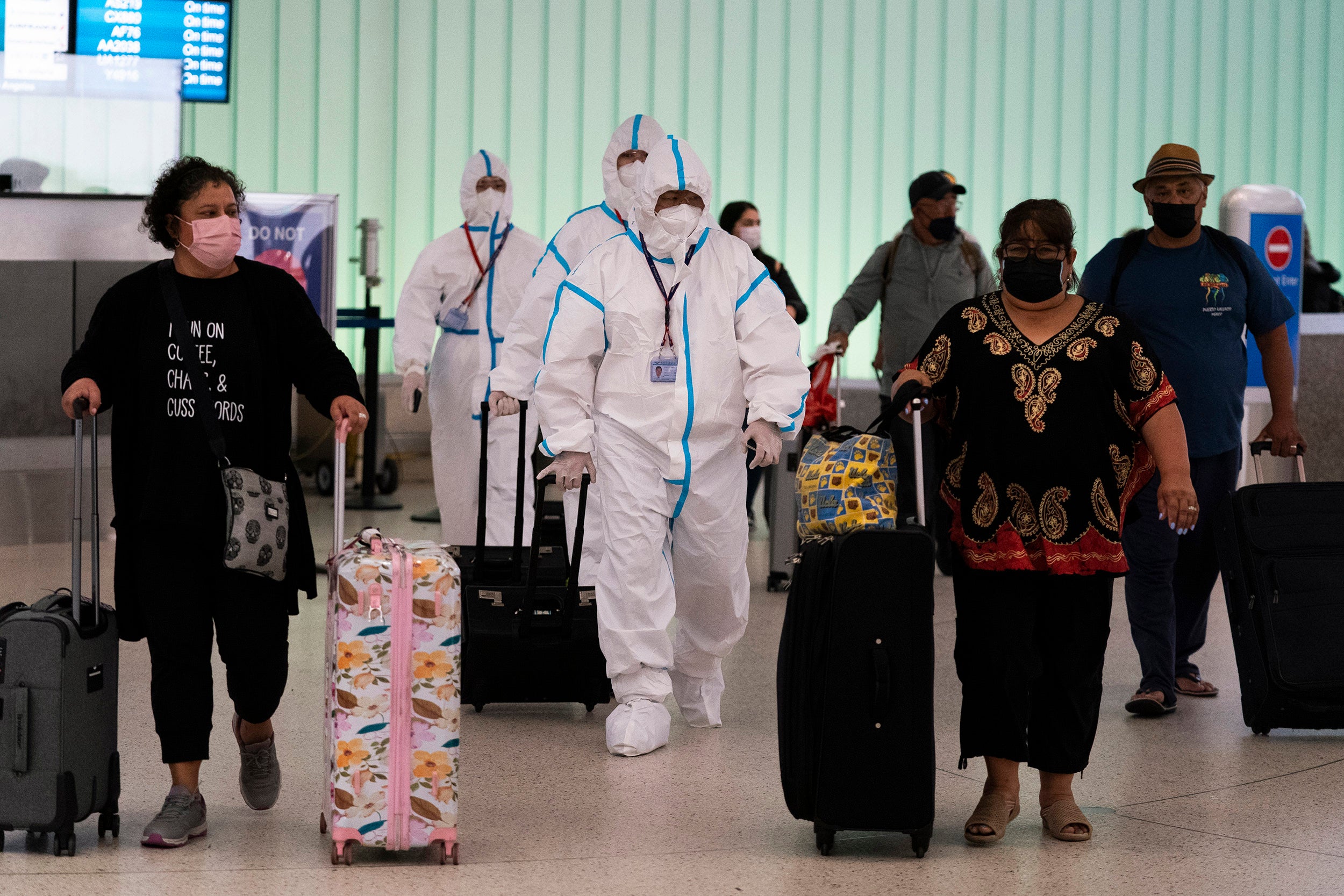
Even as infection rates decline, experts encourage the public to continue practicing basic health protocols.
Jordan Simeonov/iStock
Omicron optimism and shift from pandemic to endemic
Experts hoping to see variant improvement in a few more weeks
With Omicron’s surge peaking in some U.S. states, experts this week sounded a wary note of optimism that better times are weeks to months away, but they warn that prospects of an “end” are murky, with the likeliest scenario being one in which the virus shifts from pandemic to a more manageable endemic mode.
Experts with the Massachusetts Consortium on Pathogen Readiness on Tuesday hailed increasing signs that the Omicron surge in the U.S. is following the pattern seen in South Africa, where the jaw-dropping increase in infection was followed by an equally stunning decline. Coronavirus cases rocketed from a 264 daily case average in early November to more than 23,000 at that nation’s mid-December peak, but have since plummeted to about 4,000 per day. In the U.S., cases, hospitalizations, and deaths have continued to rise, but state-by-state data show infections beginning to decline in several places, including Massachusetts, where viral traces in Boston area wastewater indicate that case counts should continue to fall in the coming days.
Andrea Ciaranello, an associate professor of medicine at Harvard Medical School and director of Massachusetts General Hospital’s perinatal infectious disease program, said during a MassCPR media call that despite the hopeful trend, it’s too early to discontinue measures put in place to fight Omicron. Not only are cases still high, but the decline in hospitalizations that typically follows cases by a few weeks hasn’t yet begun. Further, the peak in deaths is expected a couple of weeks beyond that. Most at risk, she said, are people with compromised immune systems whose responses to vaccines are less robust, and the hospitals themselves, which are still full of Omicron patients even though the wards that handle the sickest are, anecdotally at least, under less pressure than during previous waves.
“I really am encouraging people to just hang onto these mitigation measures like masking and distancing for even just a few more weeks,” Ciaranello said. “It really could be life-saving for people who just cannot find a good vaccine response.”
When discussing the pandemic’s end, several experts said it’s likely that Omicron’s high infectivity, coupled with vaccination and past infection, will result in some type of immunity to the virus becoming common around the globe. That could lead to a transition from the pandemic’s seemingly unending state of emergency to what will likely be a long, uncomfortable coexistence with SARS-CoV-2.
“I really am encouraging people to just hang onto these mitigation measures like masking and distancing for even just a few more weeks.”
Andrea Ciaranello, Harvard Medical School
Though some are anxiously awaiting this transition from pandemic to endemic, William Hanage, an epidemiologist at the Harvard T.H. Chan School of Public Health and associate professor of epidemiology, pointed out that labeling a virus “endemic” doesn’t mean “harmless.” It can still kill, as do endemic diseases such as tuberculosis and malaria.
More like this
Still, the rising immunity to SARS-CoV-2 — coupled with familiar tools like masking and distancing and new prescription pills from Pfizer and Merck — have left even those wary of COVID-19’s twists and turns agreeing that we are in a much different place than two years ago.
“I think we should be optimistic about where we are, because we have learned a lot about vaccines. We have new drugs that are available, and we have public health tools that we know work well,” said Jacob Lemieux, an associate professor at Harvard Medical School, infectious disease physician at Massachusetts General Hospital, and co-lead of MassCPR’s variants program. “But the pandemic has been incredibly humbling so that it’s impossible really to predict with certainty what’s going to happen now.”
Hanage agreed that we shouldn’t discount COVID-19’s ability to surprise. Future variants are certain to arise, experts agreed, and may not mirror Omicron’s tendency for comparatively mild illness. Indeed, Lemieux, who spoke at the MassCPR media call, said that in places where Omicron is in decline, the virus hasn’t taken a uniformly downward path. In Denmark and in India, an Omicron subvariant dubbed BA.2 has emerged, while in some other places Delta cases have begun rising again.
“I don’t think we’re out of the woods yet. I do think things will get better,” Lemieux said. “But we’re going to have to keep a really close eye on the evolution of this virus because that has continued to be a major factor in the pandemic to date, and I don’t expect that to change.”
Hanage expects U.S. cases to fall precipitously as the warm weather arrives, as they did in two previous springs, but given the virus’ demonstrated seasonality, he also expects a surge of some sort next winter. We should get a hint about the severity by watching the U.S. South in late summer and early fall, which has proven to be a harbinger of what will happen in Northern states as the weather cools. Longer term, Hanage said it’s not unthinkable that resistance gained from Omicron, layered upon pre-existing resistance, may be broader-based and protect against new variants and severe disease.
A key unanswered question, Hanage said, is the cause of Omicron’s abrupt decline. Is it because many more people were infected unknowingly, so their cases were simply not tracked? Is it that Omicron infected most of those it could and was rebuffed by others with strong immune responses? And if the latter, what happens when those immune responses fade? Does that set up another surge?
“Those are the kinds of things that are going to go into the dynamics of what happens,” Hanage said. “You’ve got this virus, which has infected millions, and you’ve got natural selection, which is the most creative force that we know of. That means that the virus has got tricks up its sleeve.”







